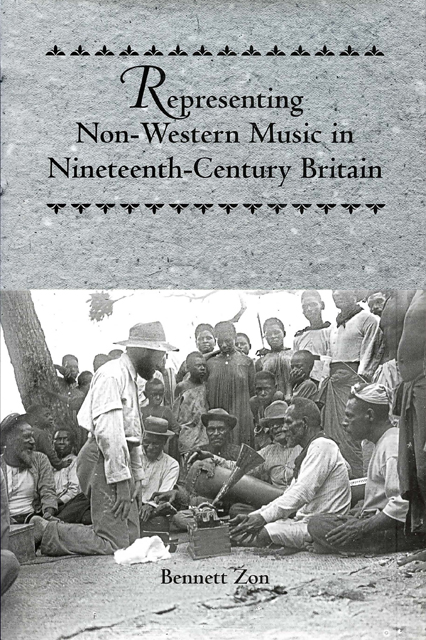Book contents
- Frontmatter
- Dedication
- Contents
- List of Illustrations
- Preface
- Acknowledgments
- Introduction Humanizing the Musical Savage: Orientalism and Racism in the History of British Ethnomusicology
- Part One Early Anthropological Influences
- Part Two Musicology in Transition to Evolution
- Part Three Individualism and the Influence of Evolution: Charles Samuel Myers and the Role of Psychology
- Part Four Retaining Cultural Identity: A. H. Fox Strangways and the Problems of Transcription
- Epilogue The “Ethnomusicology” in Long Nineteenth-Century Representations of Non-Western Music
- Works Cited
- Index
- Eastman Studies in Music
Chapter Thirteen - Myers’s Ethnomusicological Writings
Published online by Cambridge University Press: 10 March 2023
- Frontmatter
- Dedication
- Contents
- List of Illustrations
- Preface
- Acknowledgments
- Introduction Humanizing the Musical Savage: Orientalism and Racism in the History of British Ethnomusicology
- Part One Early Anthropological Influences
- Part Two Musicology in Transition to Evolution
- Part Three Individualism and the Influence of Evolution: Charles Samuel Myers and the Role of Psychology
- Part Four Retaining Cultural Identity: A. H. Fox Strangways and the Problems of Transcription
- Epilogue The “Ethnomusicology” in Long Nineteenth-Century Representations of Non-Western Music
- Works Cited
- Index
- Eastman Studies in Music
Summary
As suggested earlier, Myers’s concentration on intervallic content in his ethnomusicological findings is a particularly noticeable feature of his work, because it is in the rhythmic content of the music that he suggests one finds a heightened complexity parallel to that of the harmonic (and ultimately polyphonic) content of European music. Nevertheless, it is from harmonic analysis that Myers is able to extrapolate theoretical underpinnings that explain the evolution of primitive music. The emphasis on intervallic analysis is also important in light of Myers’s theoretical and methodological conviction in individual differences. For the intervals, and their own individual differences, by cent (100 cents equals one equally tempered semitone) and succession within a tune, are significant, and in fact lead to a full-scale historiographical framework. In other words, by differentiating taxonomically the cent composition and successive position of intervals, Myers is able to situate primitive music in a historiographical projection in its own terms, and one ostensibly unrelated to parallel processes in European music. There is, for example, an equanimity in his evaluation of intervallic strength in primitive and European music. He identifies the pure fourth—or the naturally consonant interval—as the probable cause of a harmonic tendency, implicitly, in European music, but in primitive music it is not, because of the superaddition of intervals—or the accrescent model of evolution. So the development of primitive music and European music follow different evolutionary projections. This recognition is not dissimilar to Edward Bullough’s notion of “the morphology of the aesthetic consciousness,” upon which Myers is known to have based his understanding of individual differences in listening to tones and music. In fact, one could make a good case for Bullough’s taxonomy being transcribed into Myers’s intervallic analysis of primitive music, if one takes it, broadly speaking, as a metaphor for accrescent evolution, even in Myers’s adaptation of it. The importance of distance could, in this sense, take on a more concrete meaning than even Bullough could have imagined, in the sense that the importance of distance is intervallic as much as it is methodological. Theimportance of distance lies in establishing the strength of individual intervallic content, and its import in the accrescent rise of individual primitive musics.
- Type
- Chapter
- Information
- Representing Non-Western Music in Nineteenth-Century Britain , pp. 218 - 246Publisher: Boydell & BrewerFirst published in: 2023



